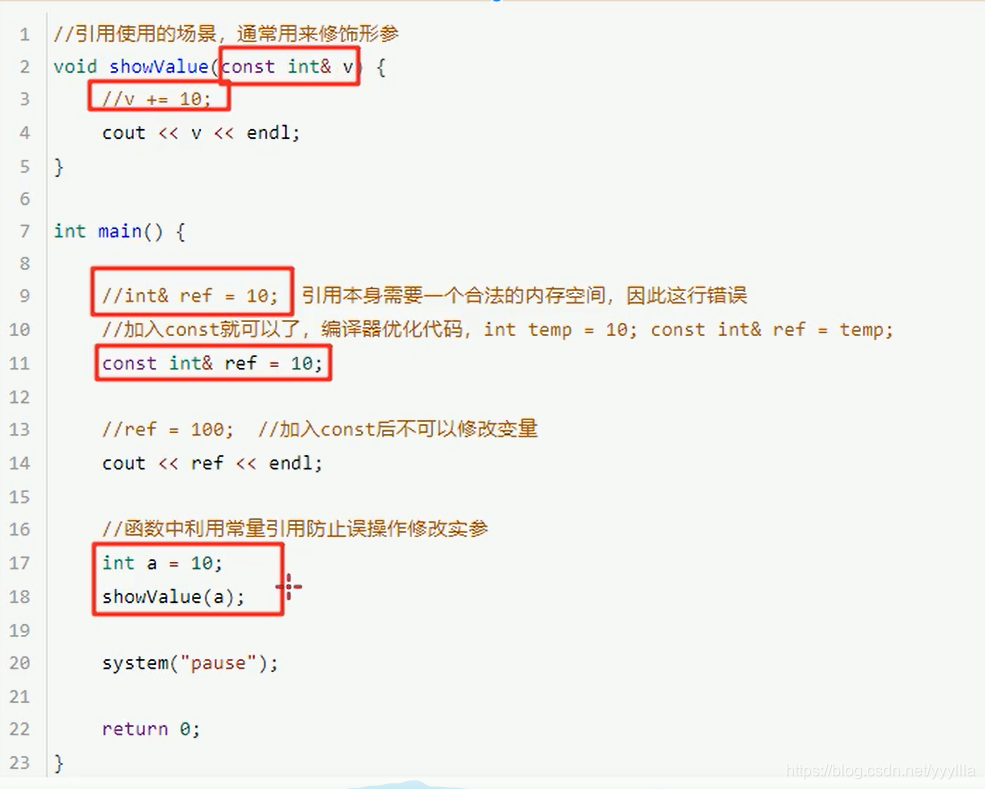1、引用的含义与注意事项
#include <iostream>
using namespace std;
#include<string>
#include<ctime>
int main()
{
int a = 10;//a指向的内存值为10
int& b = a;//引用的定义,b与a指向同一个内存;
cout << &a << "&b: " << &b << endl;
int c = 20;//c指向的内存值为20;
b = c;//c指向的内存值赋值给b指向的内存值;
cout << " a:" << a << " b: " << b << " C: " << c << endl;
//引用注意事项:
//1,引用必须初始化;2,引用一旦初始化就不能改变;
system("pause");
return 0;
}
2、引用函数参数传递
和指针传递相同可以修改实参,优点:形式上更简单。
#include <iostream>
#include<string>
#include<ctime>
using namespace std;
void swap01(int* a, int* b)
{
int temp = *a;
*a = *b;
*b = temp;
}
void swap02(int& a, int& b)
{
int temp = a;
a = b;
b = temp;
}
int main()
{
int a = 10;//a指向的内存值为10
int b = 20;
swap01(&a, &b);
cout << "指针传递a:" << a << "指针传递b:" << b;
swap02(a, b);
cout << "引用传递a:" << a << "引用传递b:" << b;
system("pause");
return 0;
}3、引用做函数返回值的注意事项:不能返回局部变量的引用
#include <iostream>
#include<string>
#include<ctime>
using namespace std;
int& test01()
{
int a = 10;
return a;//不能返回局部变量的引用;
}
int& test02()
{
static int a = 10;//static关键字,a变为静态常量;
return a;
}
int main()
{
int& ref1 = test01();
cout << ref1 << endl;//正常打印,编译器做一次数值保留;
cout << ref1 << endl;//ref指向的内存数据被释放,a不再为10
int& ref2 = test02();
cout << ref2 << endl;//正常打印
cout << ref2<< endl;//正常打印
system("pause");
return 0;
} 4、引用的本质:指针常量
 5、防止引用作为函数参数传递时改变实参值:
5、防止引用作为函数参数传递时改变实参值:
函数传参时使用const修饰形参;则形参在函数内部不允许改变;
